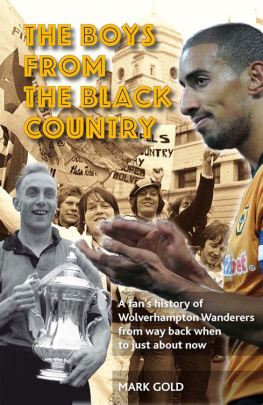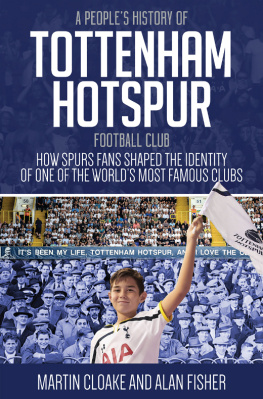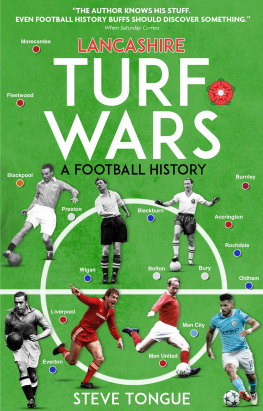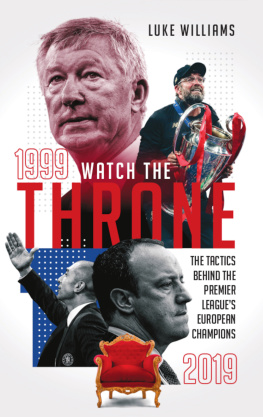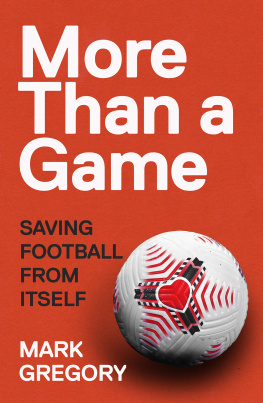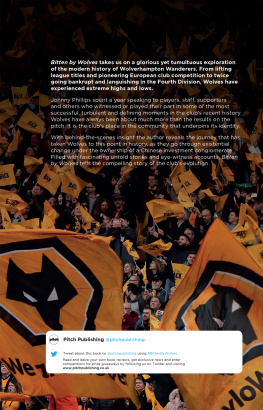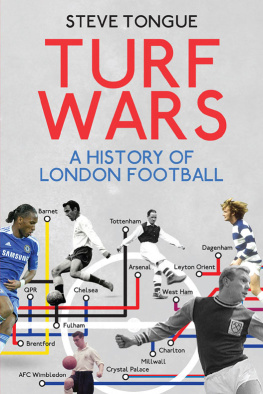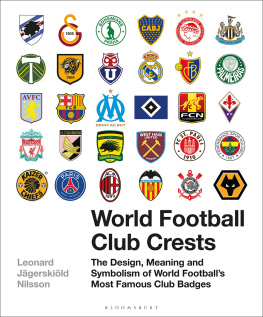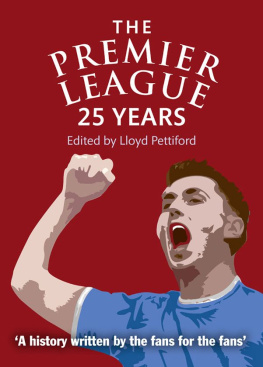
Contents
Chapter 1
Chapter 2
Chapter 3
Chapter 4
Chapter 5
Chapter 6
Chapter 7
Chapter 8
Chapter 9
Chapter 10
Chapter 11
Chapter 12
Chapter 13
Chapter 14
Chapter 15
Appendix
Part One
Banging the leather for goal
Perhaps the most significant figure among the founders of Wolves was only eleven or twelve years old at the time. Born in 1865, Jack Addenbrooke was part of the original committee who set up St Lukes school team in Blakenhall and two years later in 1879, merged with Wanderers cricket club to form Wolverhampton Wanderers.
Despite his tender age, young Addenbrooke became the first secretary of the club at St Lukes, though it is not recorded how he managed to land the role. Was he some pushy little kid who was given a position to stop him pestering the bigger boys and to give them an excuse for not always selecting him to play in their team? Or did some wise contemporary come to the conclusion that the boys got fantastic administrative talent. He could even be a future manager of the club. Lets give him the secretary role and see how he develops? Either way, Jack was to become a central figure in the development of the club for more-or-less half a century.
During the 1880s, Wolves were involved in various local competitions that dont exactly send the pulse rate racing. OK, so they lifted the Handsworth Grove Cricket and Football Club Six-a-Side competition their first silverware in 1883. Big deal! A year later came the first major trophy, when Wanderers beat Hadley in the final of the Wrekin Cup. In a closely fought match they emerged victorious by 15-0.
Trying to give some significance to these long-gone and frankly no longer very interesting events, football historians have argued that they indicate the emerging spirit and ambition that in time would make Wolves such a great club. But it seems more likely that they simply show that Hadley were pretty hopeless. Although winning any old cup must have been great for the players and supporters at the time, its hard to feel a great sense of pride about it now. Nonetheless, the following Saturdays Football Focus did its best to give the Wrekin Cup result great import:
Ray Stubbs: So what do we make of this, Mark? A pretty emphatic win for Wolves, but was it just down to the poor quality of the opposition?
Mark Lawrenson: I dont know about that, Ray. Bob Paisley always used to say that you can only beat the team thats put in front of you. Its important to instil that winning mentality and it seems to me like Wolves have got what it takes. If they maintain this kind of form, I can see them developing into one of the top teams in Europe in about seventy years time.
Ray Stubbs: That good eh, Mark? And what about Hadley, Alan?
Alan Hansen: Shocking defending.
Lee Dixon: It was shocking defending, I agree, Alan, and Im sure Hadley will be disappointed with that. But theyll also be looking to take positives out of the game. Next year I predict that Arbroath will defeat Bon Accord 36-0 in the Scottish Cup and thatll remain the world record score until at least 2010. So I think Hadley will be able to take heart from this result and find something to build on.
Garth Crooks: Footballs football. If that werent the case, it wouldnt be the game that it is.
Garth did actually utter those precise words, though not about Wolves in the 1880s. It is probably one of his more sensible comments!
In 1888 the Football League was formed. Wolves along with Villa, Stoke and that lot down the road were among the twelve original members. The rest were all from the North West or East Midlands. Sunderland apparently quite a crack outfit was excluded on the grounds that it would take the other teams too long to get there. Had Roy Keane been around as manager, he might well have blamed the decision on the bread and dripping sandwich brigade at the FA.
Wolves opening game in the League was a home match against the Villa on September 8 1888, and it saw them make history by scoring the first goal in the competition after roughly 30 minutes. Unfortunately, it wasnt one of their players who scored it! Villas full-back Gershom Cox gets the credit for an own goal, after an attempted clearance ended up crossing the goal-line to give the home side the lead. The game ended 1-1.
The following year somebody had the bright idea of moving the Wolves home ground from opposite the Fighting Cocks pub on the Dudley Road (it was hardly a road at all by modern standards and the football ground had only one shed for shelter). The switch to Molineux was realised on the grounds that by combining the football stadium with the Asda superstore, supporters could enjoy the full supermarket shopping experience before going on to the game. The first official home match was a friendly against Aston Villa on 2 September 1889, in front of almost 3,900 spectators. The following Saturday, Wolves hosted their first league match at the new stadium against Notts County, with the crowd reaching 4,000. Wolves wore their original league kit of red and white striped shirts, fading almost to pink. (In their earliest years they had worn a blue and white striped outfit, very similar to you-know-who from The Hawthorns). Perhaps this explains why they seem to have bought more players from Sunderland than from any other club certainly in the modern era. (Goodman, Craddock, Butler, Rae, Collins and Halford for a start).
When Sunderland were actually allowed into the Football League, their game against Wolves is recorded as the first instance of a shirt colour clash in the competition.
The First Cup Final not quite cricket
Wolves made the FA Cup Final in the first year of the league. Although Villa was the most Southern team in the new competition, the final against Preston North End was played in London. Such bias towards putting on major events in the capital couldnt happen nowadays, of course!
Preston were the Manchester United of the day, packed with foreign players on ridiculously high wages. Well, comparatively speaking anyway. Their boss, Major William Sudell, was also the manager of a local factory and found the players well-paid work in the town, as well as giving them a wage for playing. The foreign imports arrived from Scotland. Such wealth and bonuses ensured that Preston didnt lose a game in winning the league and they conceded only one goal in reaching the final of the cup competition.
The Cup Final was not played at Wembley that year for the good reason that the stadium wasnt built until the 1920s. So, in front of a crowd of 22,000, underdogs Wolves faced the Invincibles as Preston were known at one of the centres of cricket, The Oval. You could buy a match programme for 21,850. Well, that isnt what it cost then, but thats what was paid at auction in 2006 for the only known surviving edition. Its a world record fee for a football programme.
Surprisingly, radio commentary of The Oval Finalhas survived, featuring Henry Blofeld and expert summariser, Geoffrey Boycott. Boycott was unimpressed with Wolves highly rated defence, even though it included an international half-back line of Alfred Fletcher, Arthur Lowder and Harry Allen.
Henry Blofeld: How splendid! And here come Newcastle on the attack again.
Boycott: Its Preston, Henry.
Blofeld: Oh dear, what did I say? Terribly sorry, old chap. Quite right, its Preston coming forward. Oh look over there, theres the first tram of the day going down the Old Kent Road. Its rather a lovely red tram, too. How exciting!
Next page
